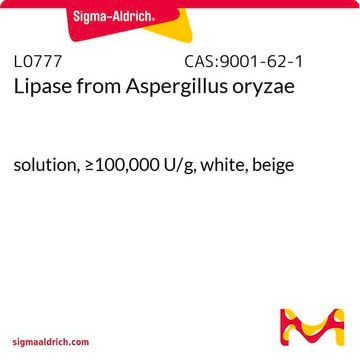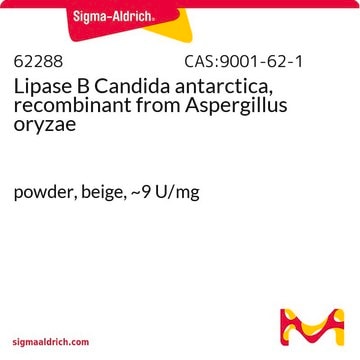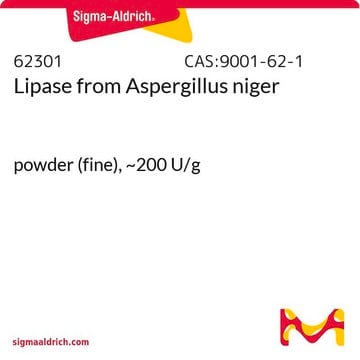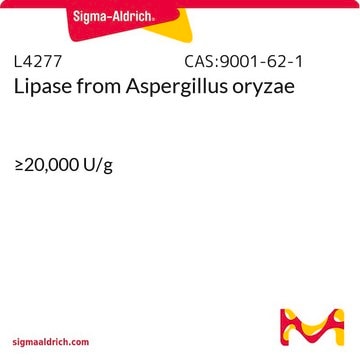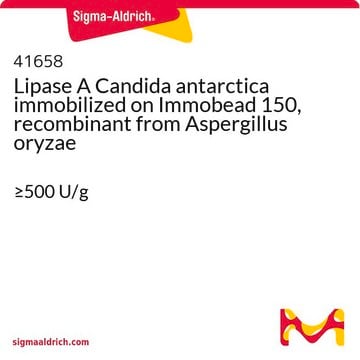L3170
Lipase from Candida sp.
recombinant, expressed in Aspergillus niger
Sinonimo/i:
Lipozyme CALB L
About This Item
Prodotti consigliati
Ricombinante
expressed in Aspergillus niger
Forma fisica
aqueous solution
enzyme activity
≥5000 LU/g
Caratteristiche più verdi
Waste Prevention
Design for Energy Efficiency
Learn more about the Principles of Green Chemistry.
sustainability
Greener Alternative Product
Categoria alternativa più verde
Temperatura di conservazione
2-8°C
Cerchi prodotti simili? Visita Guida al confronto tra prodotti
Categorie correlate
Descrizione generale
Applicazioni
- in Gold nanoparticles (AuNPs) conjugate preparation for biophysical studies
- in lipase activity assay
- for immobilization with Immobead-350
Azioni biochim/fisiol
Risultati analitici
Codice della classe di stoccaggio
10 - Combustible liquids
Classe di pericolosità dell'acqua (WGK)
WGK 1
Punto d’infiammabilità (°F)
Not applicable
Punto d’infiammabilità (°C)
Not applicable
Certificati d'analisi (COA)
Cerca il Certificati d'analisi (COA) digitando il numero di lotto/batch corrispondente. I numeri di lotto o di batch sono stampati sull'etichetta dei prodotti dopo la parola ‘Lotto’ o ‘Batch’.
Possiedi già questo prodotto?
I documenti relativi ai prodotti acquistati recentemente sono disponibili nell’Archivio dei documenti.
I clienti hanno visto anche
Il team dei nostri ricercatori vanta grande esperienza in tutte le aree della ricerca quali Life Science, scienza dei materiali, sintesi chimica, cromatografia, discipline analitiche, ecc..
Contatta l'Assistenza Tecnica.

